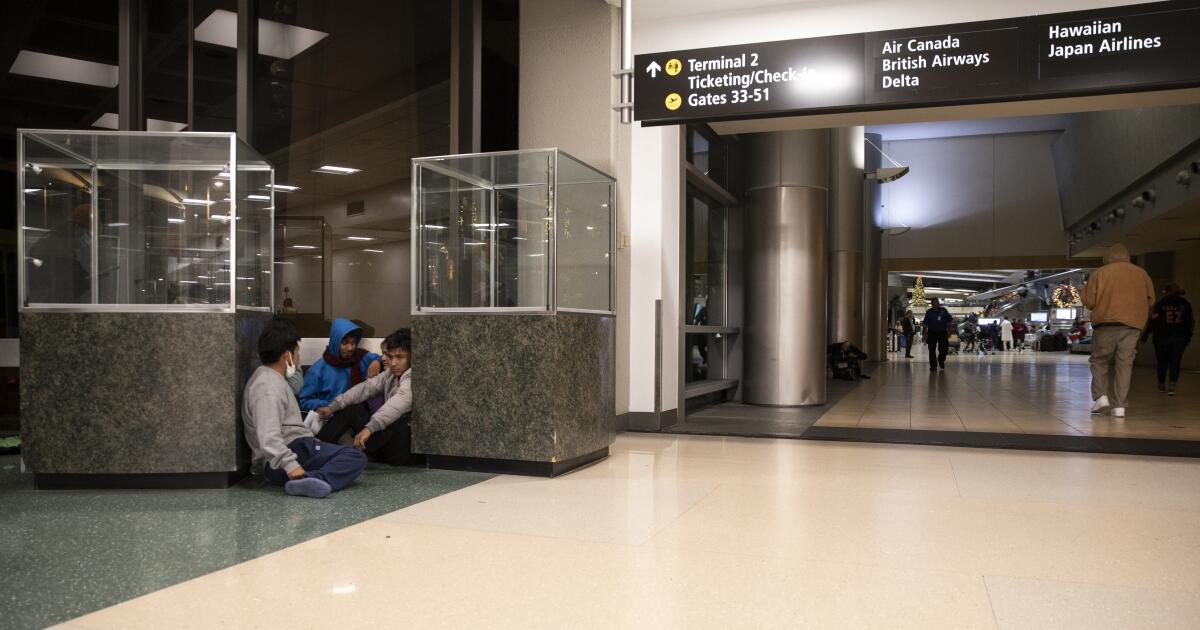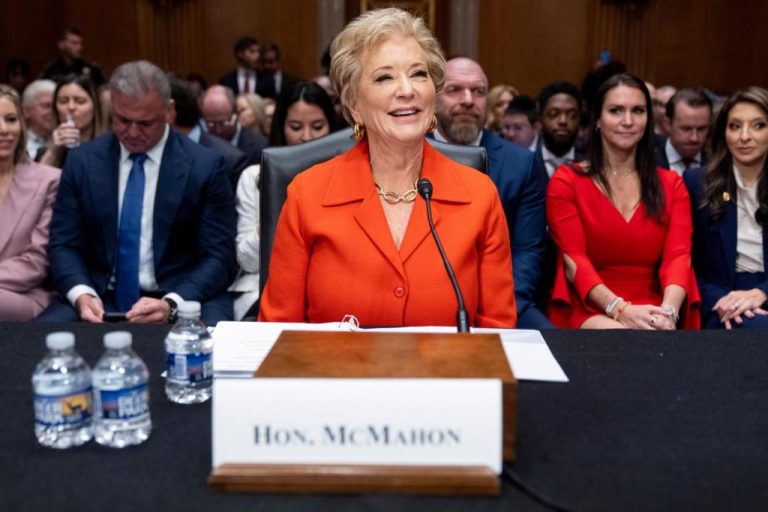

The migrant welcome center that has been serving the rising number people arriving in San Diego County from the border is slated to close by the end of the day, and leaders estimate it would take $1.5 million per month to continue to operate it.
The $6 million in county funds — $1 million per month — that have already been doled out to support arriving migrants and operate the center ran out earlier than anticipated. County Board of Supervisors Chair Nora Vargas said that she’s written to President Joe Biden and local philanthropic groups for help.
San Diego nonprofits are now scrambling to figure out how to help hundreds of migrants expected to be released by Border Patrol at local transit stations starting Friday.
“If help is needed on the streets again, we will certainly be there,” said Soraya Vázquez, deputy director of the binational legal services organization Al Otro Lado.
Over the weekend, SBCS, the nonprofit that runs the center in central San Diego, announced that the center’s “finite resources have been stretched to the limit” amid a significant increase in migrant arrivals in recent weeks.
Vargas said the estimated operating cost of $1 million per month was based on the number of migrants arriving in the region in late September, but the situation had changed. She said that this week alone the center received around 700 to 900 people per day. The migrants — many of them asylum seekers — are released into the community after processing by the U.S. Border Patrol. Many stay in the region for only a few days before moving on to their final destinations elsewhere in the country.
Funding was used mainly for bus transportation, supplies, food, and in some cases travel fare, as well as facilities and security, among others, she said. SBCS, formerly known as South Bay Community Services, is expected to provide a detailed report of expenses to the county next week. The allocated funds were supposed to last through March.
Officials and volunteers anticipate a similar scenario to what was seen before the opening of the center, with Border Patrol agents releasing migrants at transit centers and people looking for a way to get to the airport and their final destinations.
Local groups have previously set up their own information booths at transit stations to provide immediate services to recently released migrants.
They are ready to do again starting Friday.
Vargas said Tuesday she has not received any responses from her letter to Biden.
“In light of the numerous natural disasters impacting our region it is unsustainable for the County to continue its efforts to aide in addressing and ameliorating this persistent humanitarian need and crisis,” Vargas said in the letter.
“We defer to (U.S. Customs and Border Protection) on what their process will entail, but we can only assume street releases will resume. A volume of 900 individuals at transit stops each day will be a significant impact on our county and our community as well as for those seeking asylum.”
CBP has not responded to questions about whether the agency expects any impact on local operations.
It is estimated that since October about 80,000 people have received services at the center.
“What’s really disheartening to me is that the migrant center works, and it should be an example nationally of how we are able to ensure that people reach their final destination and are treated with dignity and respect,” she said.
Two nonprofits receive government funding to operate local shelter services for migrants, but both give priority to more vulnerable populations, and there is limited space. The San Diego Rapid Response Network, operated by Jewish Family Service, said Thursday that its resources and infrastructure were stretched to capacity.
“We cannot provide respite shelter and services to all the people seeking asylum that (the Department of Homeland Security) is releasing,” the group said in a statement. “The shelter will continue receiving up to 300 of the most vulnerable asylum seekers released by DHS daily, including people with medical conditions, families, pregnant people, LGBTQI people, older adults, etc., as space allows.”
Vargas said the county is focusing on a long-term approach. Earlier this month, the Board of Supervisors voted to develop a plan that would include federal- and state-funded transfer sites and respite shelters.
The county’s interim chief administration officer is expected to present recommendations to the board next week.
“With a firm plan in hand, the County can advocate consistently at the state and federal levels for funding, acquisition of a site, and ongoing staffing and services support,” reads a letter sent ahead of Tuesday’s meeting.
In the meantime, representatives from groups such as the Haitian Bridge Alliance and San Diego’s American Friends and Services Committee, said they are stepping up their efforts.
“We’re going to continue, even if it’s with limited resources,” Adriana Jasso with AFSC said. “We’re going to try to do what we can to make sure that people feel oriented and supported.”






